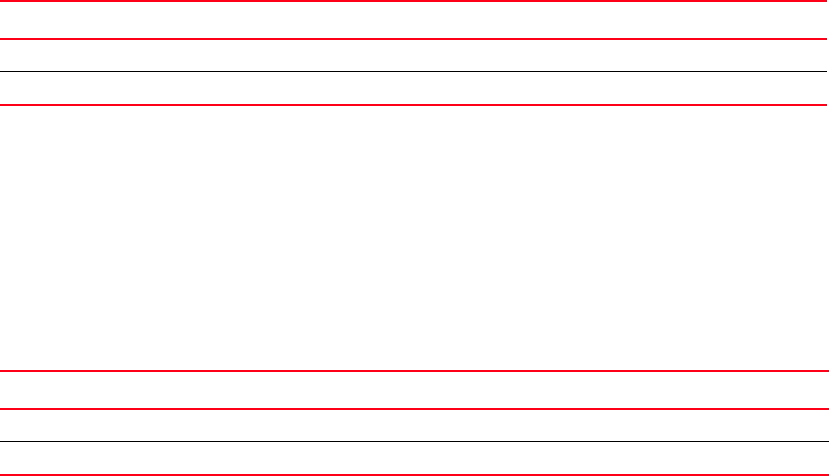(Supporting Network Advisor 12.3.0)
Table Of Contents
- Contents
- About This Document
- Overview of the Network Advisor REST API
- Getting Started
- Using the Brocade Network Advisor REST API
- Introduction
- Logging in and out
- Specifying content type
- Versioning (backward compatibility)
- Using the Topology API
- Using the SAN Fabric Discovery API
- Using the Traffic Flow API
- Using the Summary Data API
- Using the Events API
- Using the Zoning API
- Using the Historical Performance Data API
- Fibre Channel Routing
- Handling errors
- Use Cases
- API Reference
- Request and Response Schemas
- Topology
- SAN fabric discovery
- Summary data
- SummaryResponse
- StatusSummary
- AssetClassificationSummary
- NetworkObjectCountSummary
- EventsSummary
- BottleneckViolationsSummary
- OutOfRangeViolationsSummary
- PortHealthViolationsSummary
- VmViolationsSummary
- SummariesResponse
- PortsMonitorSummaryData
- MonitorDistributionData
- ProductsMonitorSummaryData
- FlowMonitorSummaryData
- Events
- Zoning
- Historical performance data
- Authentication and session management

26 Brocade Network Advisor REST API Guide
53-1003160-01
Versioning (backward compatibility)
3
Accept HTTP request header
In the case of GET requests, your client must specify the format of the data of the responses. You
do this by providing the HTTP header information. The content type for the response data is
specified through the HTTP request header named “Accept”.
The value for the content type has the following format:
MEDIA type/MIME subtype;Version Identifier
For example:
application/vnd.brocade.networkadvisor+xml;version=v1
application/vnd.brocade.networkadvisor+json;version=v1
In this release, the version is v1. For information about the version identifier, refer to “Versioning
(backward compatibility).”
When forming an HTTP GET request, you must specify the request header. The following header
values are supported:
If you do not provide a request header when calling URIs, the response data is returned in XML
format.
Content-type HTTP request header
In the case of POST requests, in addition to specifying the response data format, as described in
“Accept HTTP request header,” you must also specify the format of the data you are sending
through the input request payload. You do this by providing the HTTP Content-type header.
Versioning (backward compatibility)
The Network Advisor REST API provides backward compatibility. However, not all API changes allow
for backward compatibility.
TABLE 8 GET request header values (Accept header)
Request header name Request header value Response data format
Accept application/vnd.brocade.networkadvisor+xml;version=v1 XML
Accept application/vnd.brocade.networkadvisor+json;version=v1 JSON
TABLE 9 POST request header values (Content-type header)
Request header name Request header value Request data format
Content-type application/vnd.brocade.networkadvisor+xml;version=v1 XML
Content-type application/vnd.brocade.networkadvisor+json;version=v1 JSON










